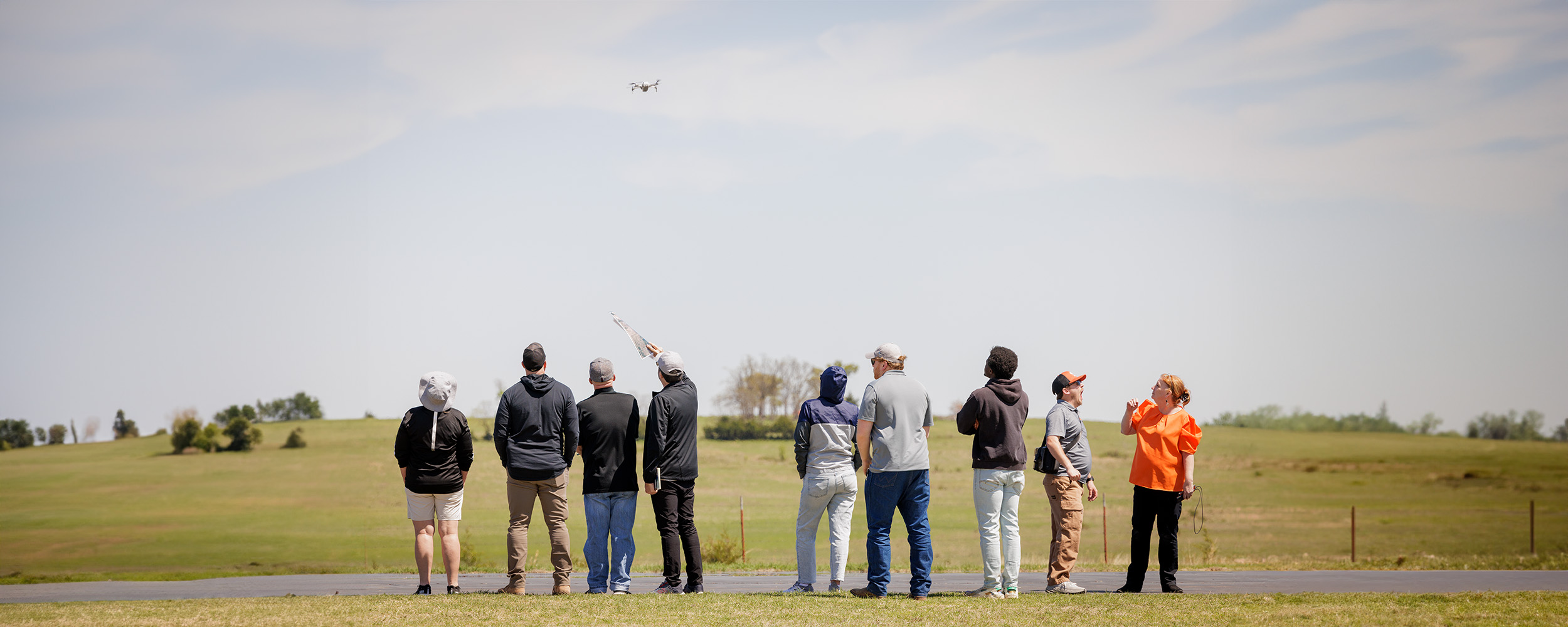
OSU leads hands-on drone search and rescue training
Wednesday, April 16, 2025
Media Contact: Page Mindedahl | Communications Specialist | 405-744-9782 | page.mindedahl@okstate.edu
This week, Oklahoma State University hosted an immersive, hands-on drone training event focused on real-world applications in search and rescue operations.
Christopher Swan presented on the global applications of drones in search and rescue efforts, while Capt. Colt Chandler shared how the OSU Police Department leverages drone technology for campus emergency response operations.
“As we’ve grown this industry, safety has to be foundational — we need to carry that mindset every step of the way. Rushing in without rules, training, or common sense puts everyone at greater risk,” Chandler said. “That’s why proper planning and clear procedures aren’t just about caution — they actually speed up operations and make them far more effective.”
Following the presentations, participants reviewed the day’s objectives, synced their drones to devices and controllers and ensured all equipment was fully charged. After a quick lunch, teams dove into a discussion to assign key SAR roles — incident commander, drone operator, data analyst, engineer and communications officer.
Swan delivered a safety briefing before the group loaded into vans and traveled to the flight field for the afternoon simulation. The engineering team, led by AJ Burba, had prepped the field with three realistic scenarios: a downed kayaker with a hidden sign, a “Band-Aid drop” challenge and a missing hiker deep in the woods.
“This is an emerging field that my students can get into,” said Corryn Breidinger, teacher for Purcell Public Schools. “There's a lot of agriculture where we are, so they've already heard about the drones being used in the agricultural field, out spraying and surveying. This is just a different avenue that can open some doors.”
From 1:30 to 4:30 p.m., participants worked in teams to pilot drones, locate signs, analyze footage and report findings. Student participants, including Albert Assifuah and Paxton Bradford, played vital roles in executing the mock missions. The exercise emphasized coordination, problem-solving and the critical importance of communication in SAR operations.
The day wrapped with a debrief and return to the Michael S. Morgan Business Accelerator, leaving teams better equipped — and more confident — for future emergency response scenarios involving drone technology.
